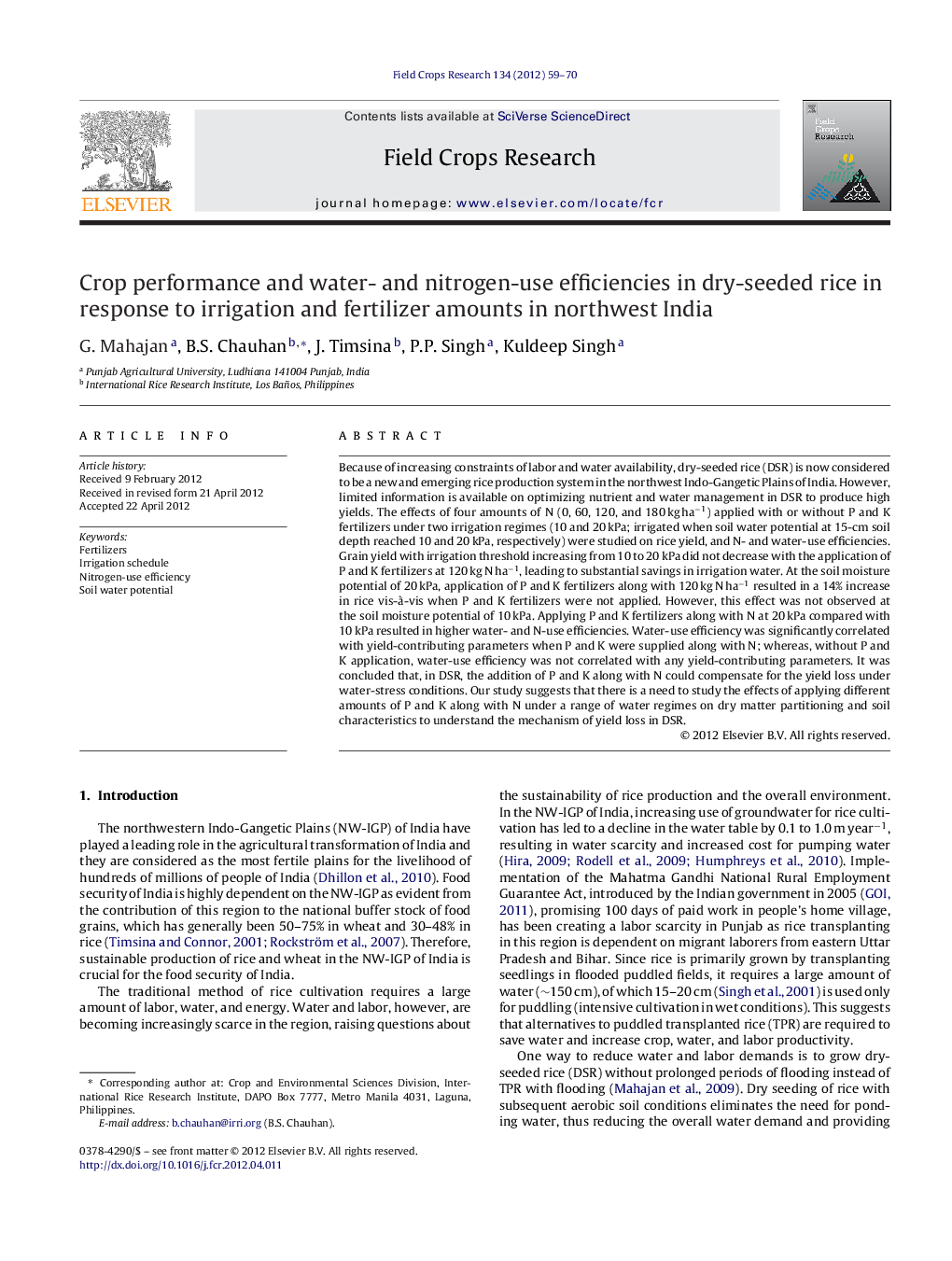| Article ID | Journal | Published Year | Pages | File Type |
|---|---|---|---|---|
| 4510356 | Field Crops Research | 2012 | 12 Pages |
Because of increasing constraints of labor and water availability, dry-seeded rice (DSR) is now considered to be a new and emerging rice production system in the northwest Indo-Gangetic Plains of India. However, limited information is available on optimizing nutrient and water management in DSR to produce high yields. The effects of four amounts of N (0, 60, 120, and 180 kg ha−1) applied with or without P and K fertilizers under two irrigation regimes (10 and 20 kPa; irrigated when soil water potential at 15-cm soil depth reached 10 and 20 kPa, respectively) were studied on rice yield, and N- and water-use efficiencies. Grain yield with irrigation threshold increasing from 10 to 20 kPa did not decrease with the application of P and K fertilizers at 120 kg N ha−1, leading to substantial savings in irrigation water. At the soil moisture potential of 20 kPa, application of P and K fertilizers along with 120 kg N ha−1 resulted in a 14% increase in rice vis-à-vis when P and K fertilizers were not applied. However, this effect was not observed at the soil moisture potential of 10 kPa. Applying P and K fertilizers along with N at 20 kPa compared with 10 kPa resulted in higher water- and N-use efficiencies. Water-use efficiency was significantly correlated with yield-contributing parameters when P and K were supplied along with N; whereas, without P and K application, water-use efficiency was not correlated with any yield-contributing parameters. It was concluded that, in DSR, the addition of P and K along with N could compensate for the yield loss under water-stress conditions. Our study suggests that there is a need to study the effects of applying different amounts of P and K along with N under a range of water regimes on dry matter partitioning and soil characteristics to understand the mechanism of yield loss in DSR.
► Limited information is available on optimizing nutrient and water management in DSR to produce high yield. ► Grain yield with irrigation threshold increasing from 10 to 20 kPa did not decrease with the application of P and K fertilizers at 120 kg N ha−1. ► Applying P and K fertilizers along with N at 20 kPa compared with 10 kPa resulted in higher WUE and NUE. ► In DSR, the addition of P and K along with N could compensate for the yield loss under water-stress conditions.
